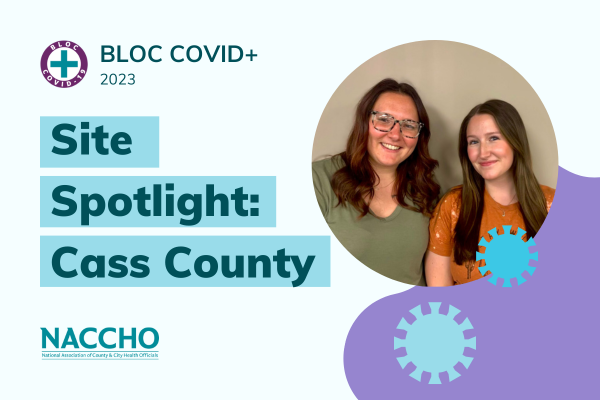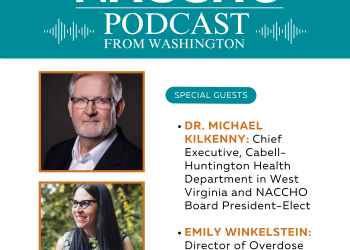The Building Local Operational Capacity for COVID-19, Healthcare-Associated Infections, and Antimicrobial Resistance (BLOC COVID-19+) project continues and expands upon the first year of the BLOC COVID-19 Demonstration Site project by allowing LHDs to go beyond COVID-19 response and address other HAIs and AR pathogens.
The goals of the BLOC COVID-19 + project are to:
- Strengthen relationships between LHDs and facilities and partners;
- Enhance LHD capacity and confidence in assessing and supporting infection prevention and control (IPC) practices in high-risk facilities;
- Improve implementation of IPC in high-risk facilities; and
- Decrease rates of and negative outcomes associated with COVID-19, HAIs, and AR pathogens in those facilities.
We asked our BLOC COVID+ sites to reflect on their experiences and lessons learned since joining our project. Here is what one of our sites, Cass County, shared with us. A standalone version of their blog entry can be found here.
“Going into this project, we had one goal in mind: How can we best serve our facilities and our community?”
“We believe that building strong, lasting relationships with our long-term care facilities (LTCFs) is the key to best serving them and our community at large. The pandemic provided an opportunity for us to develop this relationship with our LTCFs, who we previously lacked a relationship with pre-pandemic. We became a central point of contact for questions, concerns, and outbreak needs. Our reliability as a resource for LTCFs was crucial for the growth and sustainability of our relationship. Oftentimes, health departments and agencies alike are looked at as a governing or regulatory body. There is hesitation to utilize what they have to offer because they fear hindrance in their work.
Cass County, a region with 13,000 residents, maintained one of the highest infection rates in the state for weeks at a time, cementing it as the most heavily impacted county in our state. The county’s LTCFs, immigrant population, and the workforce at large were the most burdened by this development. In fact, 50% of the county’s COVID-related deaths were linked to LTCFs. This highlighted the importance of strengthening our relationship with LTCFs, which goes hand-in-hand with supporting workforce development efforts in LTCFs and our local health department.”
Strengthening Relationships with Facilities
“Prior to the pandemic, communication and camaraderie between the local health department (LHD) and outside facilities was minimal. This strained relationship persisted because the LHD wasn’t viewed as a resource by these facilities. As mentioned above, we were seen as a place that would hinder their workflow more than help it. When our team first initiated this program, it took several months to break down existing communicational barriers. We quickly learned that our methods of communication were not necessarily compatible with the facilities’ needs.
We began by offering weekly Zoom meetings to facilitate Q&A sessions and updates. However, attendance dissipated over time. Feedback from the facilities allowed us to determine that weekly email or phone check-ins were more time friendly for local facilities. Establishing this form of contact created an easier flow of open communication between us and the facilities, fostering a newfound trust and strengthening our relationships.”
Workforce Development
“We prioritized workforce development in several ways. We began by identifying what modes of communication were optimal for reaching long-term care staff. This was done by sending each LTCF a questionnaire to better understand what educational modalities worked best for individual staff members. Few respondents preferred hands-on teaching, and most indicated web-based trainings would be best for them. With this feedback, our team began developing educational materials to meet their needs. Throughout this process, we realized that while our goal was to help external facilities grow, we identified gaps in our own team’s workforce. This gave our program staff the opportunity to expand their knowledge to better serve our LTCFs and our community. They participated in additional trainings and enhanced their communication skills with community partners. Throughout the grant period, program staff attended or led 25 training sessions which allowed the team to hone in and create inclusive training models to best meet LTCF needs. Paper, audio, and visual modalities for education were used to ensure each LTCF staff member was met where they were, and to ensure their ability to retain information was optimized.
As an organization, this was a learning experience, but it also served as an eye opener. As the point person on this effort, it gave the opportunity to foster relationships, not only with the facility as a whole, but also with individuals within the agencies. Overall, this experience was irreplaceable and this work will continue to grow and expand with time.”



